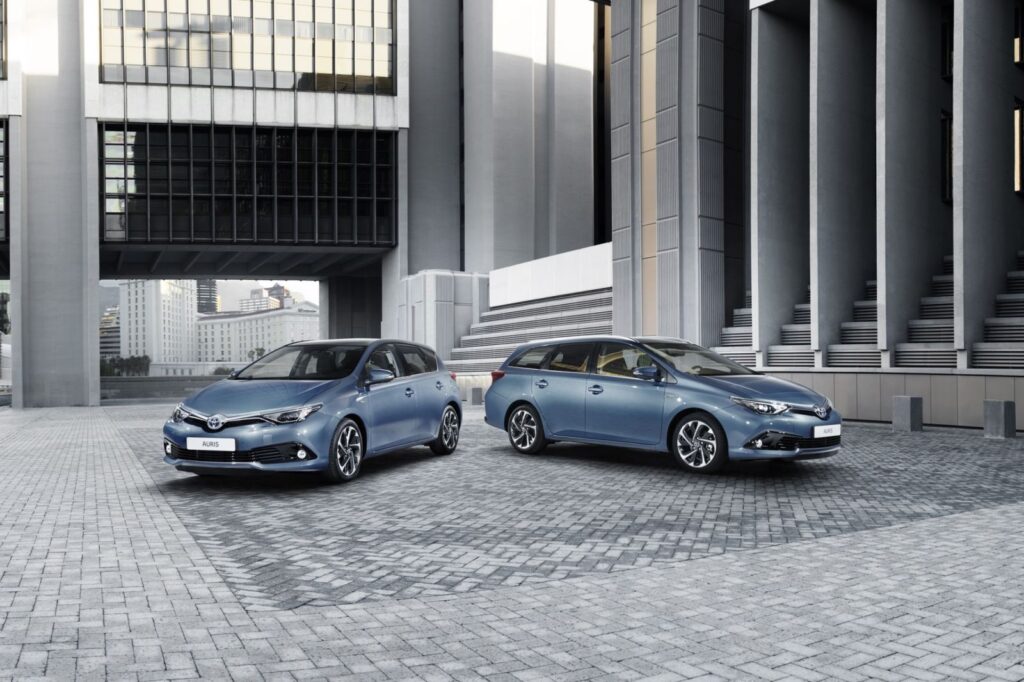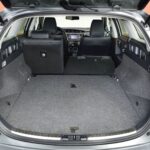Contents Show
Compact and solid: The Toyota Auris II is a safe bet as a used vehicle and also has other advantages.
Dare something new: Instead of 2007, the new generation of her compact model to call it Corolla again, Toyota's European marketing experts decided on the name Auris. Two generations later came the turnaround, since 2019 the Japanese compact has been listening to the traditional name Corolla, which has been in use since 1966. Used car buyers shouldn't be bothered by the ring of names. The Auris is also a typical Toyota. This is proven by the second generation (type E18, 2013 to 2019) at TÜV.

Body and interior:
The second Auris generation was offered as a five-door hatchback and station wagon, the three-door hatchback that was still available in the first generation was no longer available. The Auris stretches to a length of 4,28 meters, called the Touring Sports combi version to 4,56 meters. The design also dared to try new things. The Auris II had discarded the slightly conservative forms of its predecessors. Inside it was also chic, but depending on the equipment is a lot hard plastic included. There are slight point deductions for the old-fashioned LCD displays in the central instrument and center console. Overall, he is convincing inner space more with functionality than with ambience. When it comes to space, the Japanese moves at class level. The trunk volume varies with the five-door depending on seat configuration between 360 and 1.200 liters, with the station wagon it is 530 to 1.658 liters. In 2015 and 2017, the Auris received minor visual updates.
Motors and drive:
Toyota sat at his engine offer especially on rational aggregates, including a full hybrid. The drive from the Prius combines a 1,8-litre petrol engine with 73 kW/99 hp with a 60 kW/92 hp electric motor. The system performance is 100 kW/136 hp, the average consumption is 3,5 to 4 liters.
The 73 kW/99 hp 1.33 Dual-VVT-i and the 1.6 Valvematic with 97 kW/132 hp were also available. The four-cylinder do without turbo support and require an average of 5,6 to 6 liters. The 1.6 was dropped in 2015 in favor of a 1,2-liter turbo. This delivers 85 kW/116 hp and consumes an average of 4,6 to 5,1 liters, but has more at 185 Nm pulling power than that of the 1.33 (128 Nm) and the 1.6 (160 Nm). As an alternative to the manual six-speed gearbox, a continuously variable CVT gearbox (Multidrive S) was available for power transmission for the 1.2 and 1.6 models.
For frequent drivers, the Auris is recommended diesel aggregates. A 2017-liter diesel engine with 1,4 kW/66 hp was available until 90, while the 91 kW/124 hp two-liter engine ended in 2015. Between 2015 and 2018, a 1,6-liter with 83 kW/112 hp did that self-igniting principle high. The diesel convince with economical use of fuel (4,0 to 4,3 liters). They were only using manual six-speed gearboxes delivered.

Equipment and safety:
If you are looking for an air conditioner, it is better to leave the nameless basic version on the left. The Edition S+ equipment stands for good value for money. Who Comfort will find what they are looking for in the variants Style Selection or Executive. The models after the facelift have an improved infotainment generation, and Toyota has also improved the safety systems. From the basic version, the Auris is equipped with a knee airbag for the driver, among other things. In 2013, the compact Japanese achieved five stars in the Euro NCAP crash test.
Quality:
On the topic long-term quality the Auris II scores with TÜV. More than three quarters (78,5%) of the older generation masters the TÜV main inspection (HU) without defects, on average for all vehicles examined it is 71,2 percent. Problems with the chassis or with the exhaust system or loss of oil: none. In the case of the brakes, the inspectors found a slightly higher but not worrying defect rate across all years. With newer ones vehicles however, it often gets pretty dark during the light test. The TÜV inspectors criticized the front and rear lights as well as the flashing light.
And finally ...
The Auris II is a pretty solid fellow, even older specimens do well with the TÜV. The offers for classic petrol and diesel engines start from around 7.000 euros. Who one though hybrids If you want to buy one, you have to dig deeper into your pocket. At least 10.000 euros are required here.










